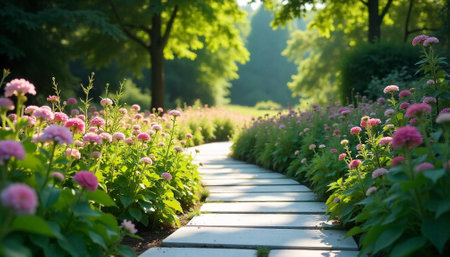1. Planning Your All-Season Raised Bed Garden
Before you start digging or building, thoughtful planning is the key to a successful all-season raised bed garden. First, scout your backyard or homestead for the best possible location. Aim for a spot that receives at least six to eight hours of direct sunlight daily—most veggies and herbs need plenty of light, especially in cooler months. Be mindful of shade from trees, fences, or buildings that might block the sun as seasons change.
Next, consider your raised bed materials. Cedar and redwood are favorites among American gardeners because they naturally resist rot and pests, making them durable for year-round use. If youre on a budget or love to repurpose, untreated pine or even upcycled bricks and cinder blocks can work well too. Just make sure any material you choose is safe for food production and won’t leach chemicals into your soil.
The layout of your beds matters for both productivity and ease of maintenance. Most folks find that beds about 4 feet wide allow easy access from either side without stepping on the soil—which keeps it nice and fluffy for plant roots. Leave at least 18 to 24 inches between beds so you have room to maneuver with tools or a wheelbarrow, even when winter boots or summer weeds bulk up your path.
For true all-season gardening, think about orientation and protection. Position your beds north-south to capture maximum sunlight throughout the year, and plan space for row covers or low tunnels to extend your growing season through chilly weather. If youre gardening in a windy area, consider adding a windbreak like a fence or some tall perennials nearby.
Planning ahead also means thinking about water access. Place your beds within reach of a hose or rain barrel to make watering less of a chore—and consider installing drip irrigation if you want to save time and effort during busy seasons.
With a little bit of intention now, youll set yourself up for abundant harvests in every season—right outside your kitchen door.
Building and Prepping Your Raised Beds
Raised bed gardening is a practical way to grow healthy vegetables, herbs, and flowers year-round, even in unpredictable climates. Whether you’re a backyard beginner or an urban homesteader, building and prepping your raised beds the right way sets the foundation for thriving plants. Here’s a step-by-step guide tailored for American gardeners eager to harvest in every season.
Step 1: Choose the Right Location
Select a sunny spot—most crops need at least 6-8 hours of direct sunlight daily. Make sure the area has good drainage and is easily accessible for watering and harvesting.
Step 2: Select Your Materials
The most popular materials for raised beds include cedar, redwood, recycled composite boards, or even galvanized steel. Avoid treated woods that may leach chemicals into your soil.
Common Materials Comparison
| Material | Durability | Cost | Notes |
|---|---|---|---|
| Cedar/Redwood | High | Medium/High | Natural rot resistance; safe for edibles |
| Pine (untreated) | Medium/Low | Low | Affordable but may decompose faster |
| Composite Boards | Very High | High | No rot; eco-friendly options available |
| Galvanized Steel | Very High | Medium/High | Modern look; long-lasting; heats up quickly in sun |
Step 3: Construct Your Bed Frame
For most all-season gardens, a bed that’s 4 feet wide (to reach the center easily) by any length works well. Height can vary from 10 to 24 inches—taller beds are easier on the back and offer deeper root space. Use corrosion-resistant screws or bolts for assembly.
Step 4: Install Your Raised Bed
Clear grass and weeds from your chosen area. Place hardware cloth or landscape fabric at the bottom to deter burrowing pests and prevent weed growth. Set your frame in place, making sure it’s level so water doesn’t pool unevenly.
Step 5: Fill with Healthy Soil Mixes
A rich, well-draining mix is key for all-season success. A classic blend is:
| Component | % of Total Volume |
|---|---|
| Compost (well-aged) | 40% |
| Coconut coir or peat moss | 30% |
| Aged manure or worm castings | 10% |
| Aeration material (perlite/pumice) | 10% |
| Native topsoil (screened) | 10% |
This blend provides nutrients, retains moisture, and ensures air flow around roots—crucial for robust growth through spring rains, summer heat, autumn chills, and even overwintering greens under cover.
Troubleshooting Tip:
If you notice poor drainage or water pooling after rain, mix in more aeration material or add a few drainage holes along the sides near the base.
A thoughtfully built and prepped raised bed doesn’t just boost plant growth—it makes gardening more accessible, manageable, and enjoyable through every season America’s climate can throw your way.
![]()
3. Seasonal Planting Strategies and Crop Choices
If you want to make the most of your raised bed garden year-round, understanding what to plant in each season is key. In most parts of the U.S., seasonal planting ensures you’re always harvesting something fresh for your table. Here’s how you can plan your garden for continual success, along with succession and companion planting tips that keep your raised beds productive.
Spring: Fresh Starts and Cool-Season Crops
When the soil begins to warm, it’s time to plant cool-season favorites. Think leafy greens like lettuce, spinach, and kale, along with radishes, peas, carrots, and broccoli. These crops thrive in the milder temperatures of early spring and can handle a light frost. Consider sowing seeds directly into your raised beds as soon as the ground is workable.
Summer: Heat-Lovers Take Center Stage
As temperatures rise, transition your beds to summer crops. Tomatoes, peppers, eggplants, cucumbers, squash, beans, and corn are classic choices for American gardens. Be sure to provide support for vining plants and keep up with watering—raised beds dry out faster in hot weather. Interplant fast-growing salad greens or herbs between slower crops to maximize space.
Fall: Second Season Bounty
Late summer is perfect for sowing another round of cool-season vegetables like arugula, beets, turnips, Swiss chard, and more lettuce. Many gardeners overlook fall gardening, but raised beds make it easier to get seeds started as summer crops finish up. Mulch helps extend the harvest by protecting roots from sudden cold snaps.
Winter: Cold-Hardy Survivors
Depending on where you live in the U.S., you might still grow food during winter! Cold frames or row covers over your raised beds allow hardy greens (think spinach, mache, and kale) plus scallions and some herbs to keep producing even when it’s chilly outside. In milder climates, garlic and onions can overwinter until spring.
Succession Planting for Continuous Harvests
Don’t stop after one crop! As soon as one patch is harvested, replant with something new suited to the next season or with a quick-maturing variety. For example, after harvesting spring radishes, pop in bush beans for summer. This approach keeps your raised beds full and productive all year.
Companion Planting for Healthier Beds
Certain plants help each other thrive when grown together. Try pairing tomatoes with basil (for pest control), carrots with onions (to deter carrot flies), or beans with corn (beans fix nitrogen that corn loves). Smart companion planting can boost yields naturally—no synthetic chemicals required.
Your Year-Round Raised Bed Plan
With a little planning and an eye on your local climate zone, you can enjoy homegrown produce from your raised beds every month of the year. Rotate crops to reduce pests and disease buildup and experiment with new varieties each season—you’ll be amazed at how much you can grow in any American backyard!
4. Weatherproofing: Extending Your Growing Season
One of the greatest advantages of raised bed gardening is its flexibility in adapting to unpredictable weather. Whether you’re facing a sudden cold snap, a blazing heatwave, or drought conditions, practical weatherproofing strategies can keep your garden productive year-round. In this section, we’ll cover tried-and-true solutions for frost protection, shade management, and water conservation—essentials for any American home gardener who wants to make the most out of every season.
Frost Protection Solutions
When temperatures dip unexpectedly, protecting your tender plants from frost damage is crucial. The table below lists some popular options for safeguarding your raised beds:
| Method | Description | Best For |
|---|---|---|
| Row Covers | Lightweight fabric draped over hoops or frames, trapping heat while allowing light and moisture through. | Lettuce, spinach, young seedlings |
| Cold Frames | Mini greenhouses made from old windows or clear plastic; placed directly on top of the bed. | Herbs, greens, starting seeds early |
| Mulching | A thick layer of straw, leaves, or compost applied around plants to insulate roots. | Root crops (carrots, beets), overwintering garlic |
| Water Jugs/Heat Sinks | Painted black jugs filled with water absorb daytime heat and release it at night near sensitive plants. | Tomatoes, peppers during late spring frosts |
Shade Management for Summer Success
American summers can bring intense sun and high temperatures that stress many vegetables. Smart shade management protects delicate crops and extends their productivity. Here’s how:
- Install Shade Cloth: Use a 30–50% shade cloth supported by stakes or PVC hoops to cool down your beds without blocking all sunlight.
- Sow Heat-Tolerant Varieties: Switch to southern-adapted cultivars like Malabar spinach or okra when mid-summer hits.
- Plant Tall Companions: Let sunflowers or pole beans cast dappled shade over lettuce or chard rows.
- Trellising & Vertical Gardening: Train vining crops upward to create living walls that shield more sensitive plants beneath them.
Water Conservation Tactics
Droughts are a reality across many parts of the U.S., making efficient water use an essential part of raised bed gardening. Try these techniques to keep your garden thriving even when rainfall is scarce:
- Add Organic Mulch: A thick mulch layer retains soil moisture and reduces evaporation.
- Irrigate Deeply but Infrequently: Encourage deep root growth with weekly soaks rather than daily sprinkling.
- Use Drip Irrigation or Soaker Hoses: Deliver water directly to roots with minimal waste—perfect for busy families!
- Collect Rainwater: Set up rain barrels near your beds to supplement irrigation during dry spells and reduce your utility bill.
- Select Drought-Resistant Crops: Consider native herbs (sage, thyme) and tough veggies (sweet potatoes, black-eyed peas) for reliable yields with less water.
The Takeaway: Be Prepared Year-Round
No matter where you live in the U.S., equipping your raised bed garden with flexible weatherproofing solutions helps you get ahead of the forecast. With a little planning—and some clever tools—you’ll enjoy harvests long after your neighbors’ gardens have gone dormant. Remember: resilience starts with preparation!
5. Organic Maintenance: Sustainable Care and Pest Control
Keeping your raised bed garden healthy all year long means more than just watering and watching plants grow—it’s about nurturing the soil, protecting your harvest, and doing it all in a way that honors nature. Here are earth-friendly strategies to keep your raised beds thriving, season after season.
Composting: The Foundation of Fertile Soil
Start by creating your own compost pile with kitchen scraps, grass clippings, leaves, and garden trimmings. Composting not only reduces waste but also gives you rich, nutrient-dense humus that improves soil texture and feeds your plants naturally. Aim to turn your compost regularly to speed up decomposition, and when it’s ready, add a generous layer to your raised beds every planting cycle.
Mulching: Moisture Retention & Weed Suppression
Spread organic mulch like straw, shredded leaves, or untreated wood chips around your plants. Mulch keeps soil moist during hot summer days, insulates roots in winter, and suppresses weeds—cutting down on time spent weeding. Over time, mulch breaks down and adds organic matter back into the soil, continuing the natural cycle of renewal.
Fertilizing Organically
Instead of synthetic fertilizers, opt for slow-release options like compost tea, worm castings, or fish emulsion. These natural amendments release nutrients gradually, supporting steady plant growth without polluting groundwater or harming beneficial soil life. Test your soil each season so you can tailor feeding to what your garden really needs.
Natural Pest & Disease Control
Encourage Beneficial Insects
Ladybugs, lacewings, and praying mantises are nature’s pest patrol—invite them into your garden by planting native wildflowers or letting a few herbs flower. Birds also love snacking on caterpillars and beetles; consider adding a bird bath or feeder nearby.
Diversify Plantings & Practice Crop Rotation
Avoid planting the same family of crops in one spot year after year. Rotate crops to break pest cycles and prevent disease buildup. Companion planting—such as marigolds with tomatoes or basil with peppers—can naturally deter pests too.
Home Remedies for Common Problems
If aphids or powdery mildew show up, reach for DIY solutions before chemicals. A simple spray of water can knock off aphids; neem oil or diluted baking soda often controls fungal issues safely. Always remove diseased plant material promptly and dispose of it away from the garden to limit spread.
By sticking with these sustainable practices in your all-season raised bed garden, you’ll not only protect your harvest—you’ll nurture the environment for future seasons too.
6. Harvesting and Enjoying Your Year-Round Bounty
How to Know When to Pick
Knowing the right time to harvest is key to enjoying the freshest flavors and best nutrition from your raised bed garden. For leafy greens like lettuce and spinach, pick outer leaves when they’re tender and before the heat of midday for a crisp taste. Tomatoes are ready when they’re fully colored and just slightly soft to the touch. Root crops such as carrots or beets can be checked by gently brushing away soil around the top; if they look plump and reach their mature size, it’s time to pull them. Herbs are most flavorful right before they flower—snip what you need for cooking, and more will grow back!
Best Practices for Harvesting
Always use clean, sharp scissors or pruners to avoid damaging plants or spreading disease. Harvest in the morning after dew dries but before the sun gets hot, which helps preserve texture and taste. Gently hold fruits or veggies so you don’t bruise them, and avoid pulling forcefully on plants—especially vines like cucumbers or beans—to keep roots undisturbed. Try picking a little at a time throughout the season (succession harvesting), which keeps plants producing and gives your family a steady supply of fresh food.
Simple Family Recipes for Fresh Produce
Garden Veggie Stir-Fry
Chop up whatever’s ripe—zucchini, bell peppers, snap peas—and toss them in a hot skillet with olive oil, garlic, salt, and pepper. Finish with a splash of soy sauce for a quick weeknight dinner.
Fresh Salsa
Dice homegrown tomatoes, onions, jalapeños, and cilantro. Mix with lime juice and a pinch of salt for a zesty dip that’s perfect with chips or spooned over grilled chicken.
Sweet Berry Parfaits
Layer freshly picked berries with yogurt and granola for a wholesome dessert or breakfast treat everyone will love.
The Joy of Sharing Your Homegrown Bounty
Your raised bed garden isn’t just about food—it’s about sharing experiences with your family, teaching kids where their meals come from, and connecting with neighbors over baskets of extra produce. Whether you’re snipping herbs for tonight’s soup or gathering armfuls of summer squash for a backyard cookout, each harvest is its own reward—a reminder of all the seasons you’ve tended your little patch of earth together.


